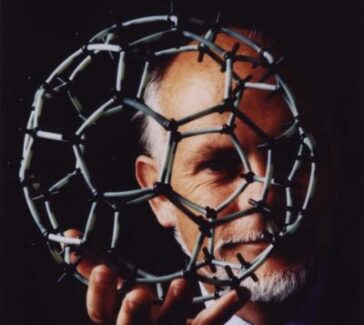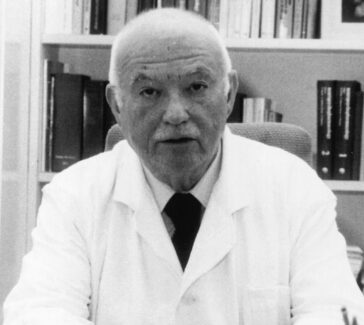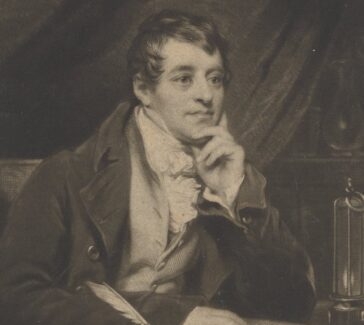Alan G. MacDiarmid, Alan J. Heeger, and Hideki Shirakawa
In the 1970s MacDiarmid, Heeger, and Shirakawa developed special “conductive polymers,” which had significant applications in microelectronics.
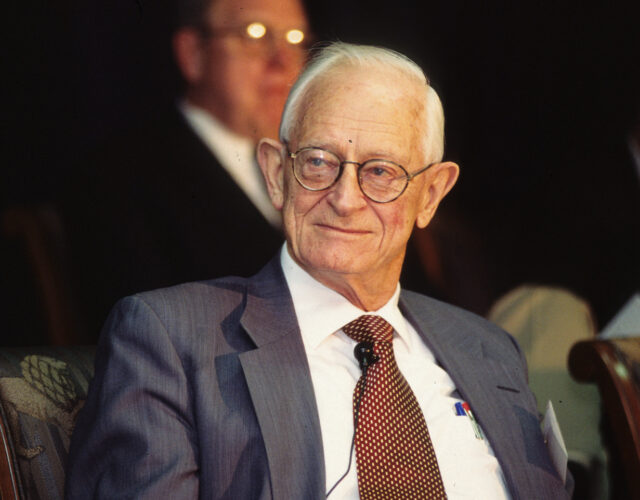
When we think of materials that conduct electricity, we usually think of metals, not of synthetic polymers such as plastics. Alan MacDiarmid, Alan Heeger, and Hideki Shirakawa received the Nobel Prize in Chemistry in 2000 for their work on “conductive polymers.”
LEARN MORE
Biography is one way of learning about a person. Oral history is another. Spend a few minutes listening to Alan Heeger’s interview and Alan MacDiarmid’s interview archived by the Science History Institute’s Center for Oral History. What do you hear? Has the recording picked up background noises, interesting accents, nervous laughter, or meaningful pauses? What might these tell you about the interview context, who is speaking, or how the speakers feel about the memories being discussed? What do think you can learn about Heeger and MacDiarmid from their oral histories that is different from the content of this biography?
The MacDiarmid-Heeger Partnership
In 1975 MacDiarmid (1927–2007) and Heeger (b. 1936) were both professors at the University of Pennsylvania, MacDiarmid in chemistry and Heeger in physics. An unusual polymer exhibiting electrical properties had recently been reported in the chemical literature. This polymer, polymeric sulfur nitride, or (SN)x, consisted of monomers made up of sulfur and nitrogen. MacDiarmid had extensive experience working with sulfur nitride compounds, many of them beautifully colored like (SN)x, which had a metallic gold color, although it was not a metal. MacDiarmid and Heeger decided to work together to understand this compound.
Shirakawa Signs On
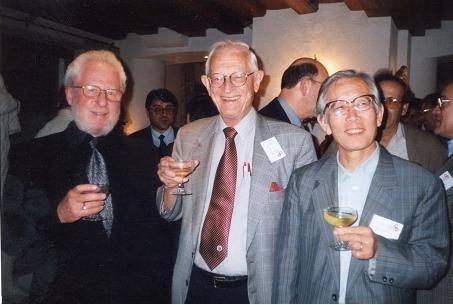
That same year, MacDiarmid was a visiting professor in Japan and went to the Tokyo Institute of Technology to give a talk on (SN)x. After the lecture MacDiarmid and Shirakawa (b. 1936), then a researcher at the institute, met over a cup of green tea and discussed their mutual fascination with conductive materials.
Shirakawa showed off a sample of a silvery polymer he and his colleagues had serendipitously created. By mistake a visiting scientist to Shirakawa’s laboratory had added too much Ziegler-Natta catalyst to acetylene that he wanted to polymerize. Instead of the anticipated black powder, ragged pieces of silvery polyacetylene film were produced. Since it is part of the lore of chemistry that a substance that exhibits a metallic sheen will probably conduct electricity, MacDiarmid immediately invited Shirakawa to the University of Pennsylvania for a year to work with him and Heeger on conductive polymers.
Polyacetylene
Previously MacDiarmid and Heeger had found that the conductivity of (SN)x increased 10-fold after adding bromine atoms in a doping procedure similar to that used in silicon transistors (see Gordon Moore). Basically, doping is a way of making a substance conductive through the introduction of an impurity (in this case the bromine atoms). In the case of Shirakawa’s polyacetylene the increase in conductivity after doping with bromine was 10 million times higher than before doping.
Unlike (SN)x, which was an inorganic polymer, polyacetylene was an organic polymer. Because organic polymers are cheaper, easier to manufacture, lighter, and more flexible than their inorganic analogs, the discovery of highly conductive polyacetylene by MacDiarmid, Heeger, and Shirakawa in 1976 opened a floodgate of research into conducting and semiconducting organic polymers. Among the uses of these polymers are flexible “plastic” transistors and electrodes, plastic batteries, electromagnetic interference shielding, static elimination, corrosion inhibition, and electroluminescent-polymer displays. Many researchers continue to probe the promising field of organic conducting polymers.
MacDiarmid’s Journey from New Zealand to Penn
The three scientists had arrived at Penn from faraway places and with very different academic backgrounds. MacDiarmid, the son of a mechanical engineer, was born and raised in New Zealand. Like many men of the time, MacDiarmid’s father faced long unemployment during the Great Depression. But the family held together, earning what they could. MacDiarmid, the fourth of five children, delivered milk by bicycle early in the morning while he was in elementary school.
A 19th-century college textbook of his father’s fascinated him, even though he could not understand its mysterious notations. His curiosity was satisfied by a book that he repeatedly checked out from the local library, The Boy Chemist (1924) by the Reverend Archie Collins. To the delight of his family he was able to make fireworks for Guy Fawkes Day, the traditional holiday in England and throughout its empire for such displays. He was a successful student in school, urged on by his parents’ dictum that an A grade in a class is not success; rather, success is knowing that you have worked to the best of your abilities.
MacDiarmid worked his way through Victoria University of Wellington as a low-paid laboratory assistant and part-time chemistry student. He then won a Fulbright Fellowship to the University of Wisconsin, from which he earned a PhD in inorganic chemistry. Meanwhile he became president of that university’s International Student Club. He held a postdoctoral appointment at Cambridge University before joining the faculty of the University of Pennsylvania in 1955.
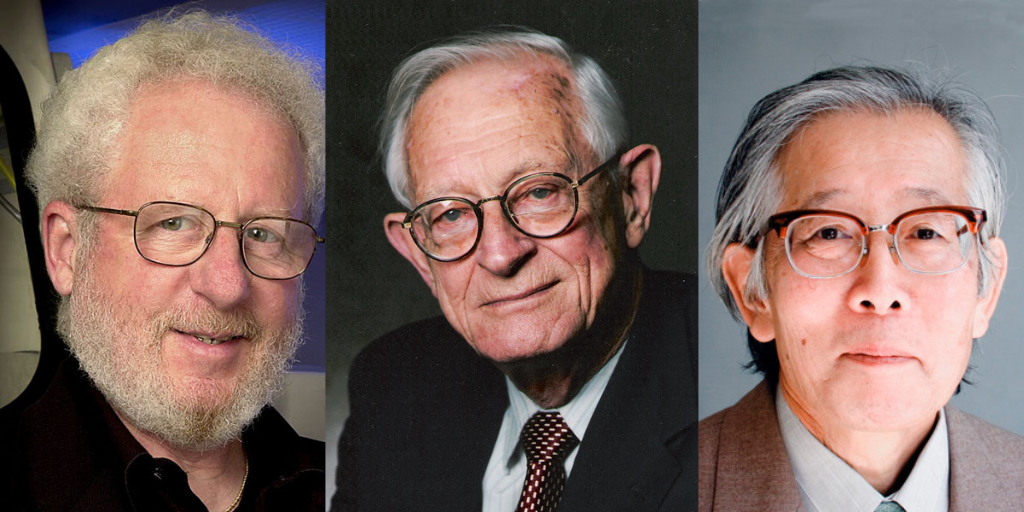
Heeger’s Childhood and Early Career
Alan Heeger hails from the midwestern United States. The families of both of his parents had immigrated to America to escape the oppression and poverty that was the lot of many Russian Jews. Heeger’s father, the owner of a general store in a small farming town in Iowa, died when Heeger was only nine. His mother then took him and his younger brother to Omaha, Nebraska, where her family was living, and raised them there. Although he was generally a good student, Heeger cannot remember finding sciences particularly easy in high school. His mother, who early in her life had to forego a scholarship to attend college, impressed in her sons’ minds the goal of earning college degrees.
Looking for something practical, Heeger enrolled at the University of Nebraska as an engineering student. Not finding engineering to his liking, he instead majored in physics and mathematics. Then it was on to the University of California, Berkeley, for a PhD in solid-state physics. His first appointment was to the physics department at the University of Pennsylvania, where he remained from 1962 to 1982.
Shirakawa: From Small-Town Japan to Tokyo’s Institute of Technology
Hideki Shirakawa is the third of five children born in Tokyo to a medical doctor and a daughter of the chief priest of a Buddhist temple in Takayama. The family returned to his mother’s hometown, far from Japan’s major cities, in the closing days of World War II. In the idyllic setting of Takayama, Shirakawa’s desire to become a scientist grew from his collecting insects and plants and making radios. Presciently, when he was a young teenager, he wrote an essay about how he wanted to become a scientist and do research on plastics. He opted to study polymer chemistry, instead of horticulture or electronics, when he was accepted at the Tokyo Institute of Technology. In short order he earned both his bachelor’s and doctoral degrees in chemical engineering from that institution and then stayed on as a researcher.
The Nobel Prize
In 2000 MacDiarmid, Heeger, and Shirakawa received the Nobel Prize in Chemistry for the discovery and development of conductive polymers. MacDiarmid remained at the University of Pennsylvania for the rest of his career. Shirakawa returned to Japan to continue polyacetylene research at the Institute of Materials Science at the University of Tsukuba. In 1982 Heeger was lured to the University of California, Santa Barbara, by the promise of building a materials department in that beautiful setting. There he also founded UNIAX, a company that specialized in polymer light-emitting diodes (LEDs) and was eventually purchased by DuPont.

